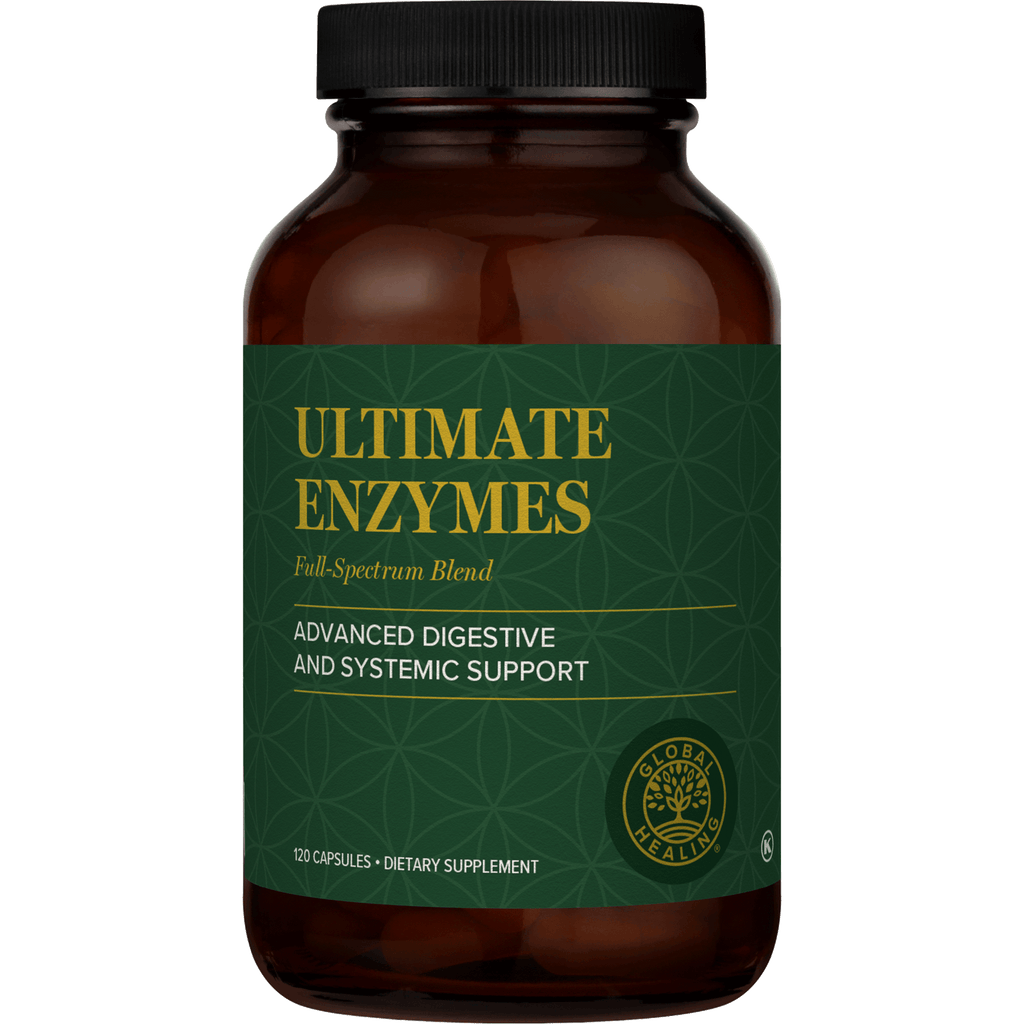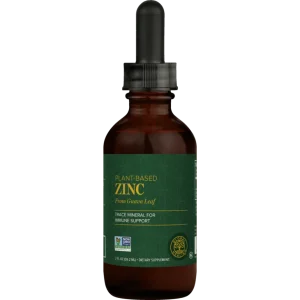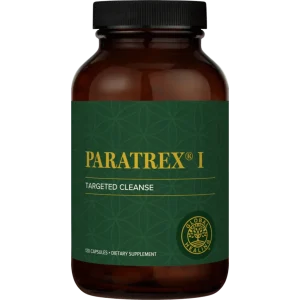Read more
Global Healing’s Ultimate Enzymes are now in Brisbane Australia!
“I have been a long-term fan of Oxy Powder for well over a decade, both personally and in my Naturopathy practice. I have never experienced much of a result in terms of digestive enzymes, however I decided to give Ultimate Enzymes a trial recently and was very impressed with the results. No matter how healthy you are in life, every now and again, you are put into a position whereby you have to move away from your home-life diet. So I was at a social evening to do with my daughter’s school and we were served pizza and the gluten free options didn’t appear forth coming, so I ate small amount of vegetarian wheat pizza. I wasn’t expecting to have a bowel motion the next day, however before I went to bed I took 2 x Ultimate Enzymes. To my unexpected delight I had a normal bowel motion the next morning before my juice – a fluffy floater! I have been prescribing Ultimate Enzymes in my practice ever since. We love Ultimate Enzymes in Australia”
Miriam Young, Medical Herbalist, Brisbane, Queensland, Australia
Vegetarian capsule
Vegan friendly vegetable capsules are used instead of standard drug capsules that are composed of protein sourced from bovine, porcine, equine, and even fish.
Certified organic gum acacia
Added as a flow agent, Global Healing Center revolutionized the supplement manufacturing industry by refusing to add toxic fillers, binders and excipients like magnesium stearate to our products. Dr. Group researched many substances and developed and tested all natural approaches and found organic acacia gum to be the most superior option.
Ingredients
Ultimate Enzymes ® (Proprietary Blend)
Protease with DPPIV (FCC 60,000 HUT/g)
Protease breaks down proteins and gluten, and is derived from Aspergillus oryzae, Aspergillus niger and Bacillus subtilis. This is a protease blend derived from the fermentation of three microbial organisms. It is a mixture of acid, neutral and alkaline proteases that provide activity throughout the entire range of pH in the gastrointestinal system (active from pH 2.5 to 9.0). DPPIV is a blend of different proteases (enzymes that break down protein) that mimic the body’s own natural DPPIV enzymes. In digestion, proteases hydrolyze (break down) protein into smaller polypeptides and free amino acids. This action increases the digestibility of proteins, regardless of their source. This powerful blend of enzymes helps hydrolyze all types of protein including gluten from cereal grains. Most people are sensitive to the gluten in wheat, barley and rye. The reaction can be from minor abdominal discomfort up to very severe reactions in those people with celiac disease. This blend is really ideal to hydrolyze “hidden” gluten found in highly processed foods. This protease blend demonstrates both exopeptidase and endopeptidase activity with high substrate specificity. The exopeptidase enzymes hydrolyze protein molecules at the terminus of peptide chains liberating amino acids, while the endopeptidase hydrolyzes protein molecules at an interior peptide bond liberating peptides of various lengths. All proteases demonstrate a reduction in swelling when taken properly
Amylase (FCC 22,500DU/g)
Amylase breaks down starch and is derived from Aspergillus oryzae. This is an alpha amylase enzyme produced by fermentation of the fungal organism Aspergillus oryzae. Alpha Amylase is an endoamylase that hydrolyzes (breaks down) starch and glycogen into dextrin, glucose and maltose. Rice and potatoes contain the highest levels of starch.
Glucoamylase (FCC 20 AGU/g)
Glucoamylase breaks down starch and is derived from Aspergillus niger. The glucoamylase enzyme (also called amyloglucosidase) is produced by the fermentation of the fungal organism Aspergillus niger. Glucoamylase is an exoamylase that hydrolyzes (breaks down) starch, producing maltose and free glucose subunits from the non-reducing end of the starch. Along with other amylases, glucoamylase further enhances the digestion and nutritional value of food based starches.
Lactase (FCC 1500 ALU/g)
Lactase breaks down lactose (milk sugar) and is derived from Aspergillus oryzae. Nutritionists estimate that 10 – 20% of the U.S. population is lactose intolerant. Some ethnicities have much higher levels of lactose intolerance. Lactase is designed to hydrolyze (break down) milk sugar, called lactose, into its component parts, glucose and galactose. Lactase is derived from the fermentation of Aspergillus oryzae. Most Asian, African, and Native American people are lactose intolerant. Fifty percent of Hispanics and about 20 percent of Caucasians do not produce lactase as adults and should supplement their diet with lactase.
Cellulase I and II (FCC 625 CU/g)
Cellulase breaks down cellulose (fruits and vegetables), and is derived from Trichoderma reesei and Bacillus licheniformis. Every plant cell is surrounded by a non-living complex, called a cell wall. A major component of cell walls is a complex carbohydrate, cellulose. Humans do not produce enzymes needed to digest cellulose. Cellulase enzymes aid in the total digestion of plant-based foods and increase the nutritional value of those foods.
Maltase (FCC 50 DPo/g)
Maltase breaks down maltose (cereals, legumes and barley), and is derived from Aspergillus oryzae. Maltase is an exo-carbohydrase enzyme that acts only on the non-reducing end of starch, producing the disaccharide maltose. Combined with the other carbohydrase enzymes, it enhances the overall digestion of starch and other carbohydrates. It is produced by fermentation of Aspergillus oryzae or from barley malt.
Hemicellulase (FCC 1000 HCU/g)
Hemicellulase breaks down hemicellulose (fruits, vegetables, grains, and cereals), and is derived from Trichoderma reesei. Hemicellulose is another major component of the cell wall of plants. Again, the inclusion of hemicellulase aids in the total digestion and increases the nutritional value of plant-based foods. Hemicellulase is also produced by fermentation of the fungal organism Trichoderma reesei.
Xylanase (FCC 50 XU/g)
Xylanase breaks down xylose (high fiber foods, grains and cereals), and is derived from Trichoderma reesei. Xylanase is a special kind of hemicellulase. It is especially effective at digesting high fiber foods, which have a very high content of xylans, a complex polysaccharide made up of a chain of 5-carbon sugars called xylose. Xylanase is also produced by fermentation of the fungal organism Trichoderma reesei.
Beta Glucanase (FCC 50 BGU/g)
Beta Glucanase breaks down beta glucans (high fiber foods, grains and cereals), and is derived from Trichoderma reesei. The cereal grains, wheat, barley and rye, contain beta glucans, a kind of carbohydrate. Beta glucans can become viscous in the intestinal tract, slowing natural peristalsis (intestinal contractions). The Beta glucanase enzyme hydrolyzes these glucans, reducing viscosity and balancing natural peristalsis. Beta glucanase is produced by fermentation of the fungal organism Trichoderma reesei. Beta Glucans are most commonly found in cereal grains, wheat, barley and rye, as well as bakers yeast.
Serrapeptase (10,000 SU/g)
Serrapeptase breaks down fibrin and mucous, and is derived from Serratia marcescens. Serrapeptase is a powerful proteolytic enzyme with fibrinolytic and redness-reducing activity. It is a bacterial source protease enzyme produced by the fermentation of Serratia marcescens. Serrapeptase is used primarily as a systemic enzyme. It supports healthy joint function, helps maintain a normal swelling response and demonstrates powerful fibrinolytic activity, which is important for cardiovascular support. Other functions include a lessening of scar tissue and a reduction in the viscosity of mucous in lungs and nasal passages.
Nattokinase (800 FU/g)
Nattokinase breaks down fibrin and mucous, and is derived from Bacillus natto or Bacillus subtilis natto. The organism that produces nattokinase was originally discovered in a fermented soy food called natto. Nattokinase is a powerful proteolytic enzyme with fibrinolytic activity derived from the bacteria Bacillus subtilis natto and/or Bacillus natto, which was originally found in NATTO, a traditional fermented soybean food that is very popular in Japan.
Bromelain (FCC 375,000 PU/mg)
Bromelain breaks down protein and is derived from Ananas comosus. Bromelain is an extract from the stem or juice of pineapples, Ananas comosus. Bromelain helps digest proteins and can also be used for its resistance to swelling when used systemically. Read more about the Health Benefits of Bromelain.
Papain (FCC 200,000 PU/mg)
Papain breaks down protein and is derived from Carica papaya. Papain is an extract from immature papaya, Carica papaya. Papain demonstrates both exoprotease and endoprotease activity with a broad pH range. It helps digest proteins and can also be used for reducing swelling when used systemically.
Alpha Galactosidase (FCC 250 GalU/g)
Alpha Galactosidase breaks down complex carbohydrates, and is derived from Aspergillus niger. Alpha Galactosidase helps digest grains and legumes, which contain many non-digestible sugars called oligosaccharides. These often result in abdominal discomfort, gas and bloating. Alpha Galactosidase breaks down these oligosaccharides very effectively. It is produced by the fermentation of Aspergillus niger.
Lipase (FCC 675LU/g)
Lipase breaks down fats and oils, and is derived from Aspergillus niger. Lipase is a lipolytic enzyme produced by the fermentation of Aspergillus niger. Lipase catalyzes the hydrolysis of fats and oils, yielding monoglycerides, diglycerides, glycerol and free fatty acids. It has broad substrate specificity on the fats and oils of vegetable and animal origins.
Catalase (FCC 25 BU Baker Unit/g)
Catalase breaks down H2O2 to water and oxygen, and is derived from Aspergillus niger. Catalase is an antioxidant enzyme that catalyzes the conversion of hydrogen peroxide into water and oxygen. Hydrogen peroxide is a by-product of cell metabolism, which serves some useful functions including in an immune response.
Invertase (FCC 1000 SU/g)
Invertase breaks down sucrose and table sugar, and is derived from Saccharomyces cerevisiae. Invertase is another carbohydrase enzyme that splits sucrose (common table sugar) into its component parts, glucose and fructose. Combined with all the other carbohydrases, it enhances the overall digestion of starch and other carbohydrates. It is produced by the fermentation of Saccharomyces cerevisiae.
Pectinase (FCC 2500AJDU/g)
Pectinase breaks down pectin and dietary fiber, and is derived from Aspergillus niger. In plant cells, pectin consists of a complex set of polysaccharides that are present in most primary cell walls and are particularly abundant in the non-woody parts of plants, especially fruit and vegetables. Pectinase selectively hydrolyzes and depolymerizes naturally occurring pectin.
Phytase (FCC 15 FTU/g)
Phytase breaks down seeds, corn, soy and nuts, and is derived from Aspergillus niger. Phytase is an enzyme that catalyzes the hydrolysis of phytic acid (myo-inositol hexakisphosphate), an indigestible, organic molecule that contains six phosphate molecules. Phytic acid not only reduces the available phosphorus, but it binds certain important minerals making them unabsorbable. These include zinc, iron, and to a lesser extent, calcium and magnesium. Phytic acid and its salt form, phytate, are commonly found in many plants, especially grains and seeds. Phytase catalyzes the release of inorganic phosphorus, as well as other bound essential minerals.
Glucose Oxidase (200GO/g)
Rarely found in a blend of systemic enzymes or digestive enzymes supplement, glucose oxidase breaks down glucose to H2O2, and is derived from Aspergillus niger. Glucose oxidase is an oxidoreductase enzyme. That is, an enzyme that catalyzes the transfer of electrons from one molecule (the reductant) to another (the oxidant). Glucose oxidase catalyzes the oxidation of glucose to hydrogen peroxide (H2O2) and D-glucono-d-lactone. In cells, glucose oxidase aids in breaking sugar down into its metabolites. It also provides significant antibacterial activity from the production of H2O2.








